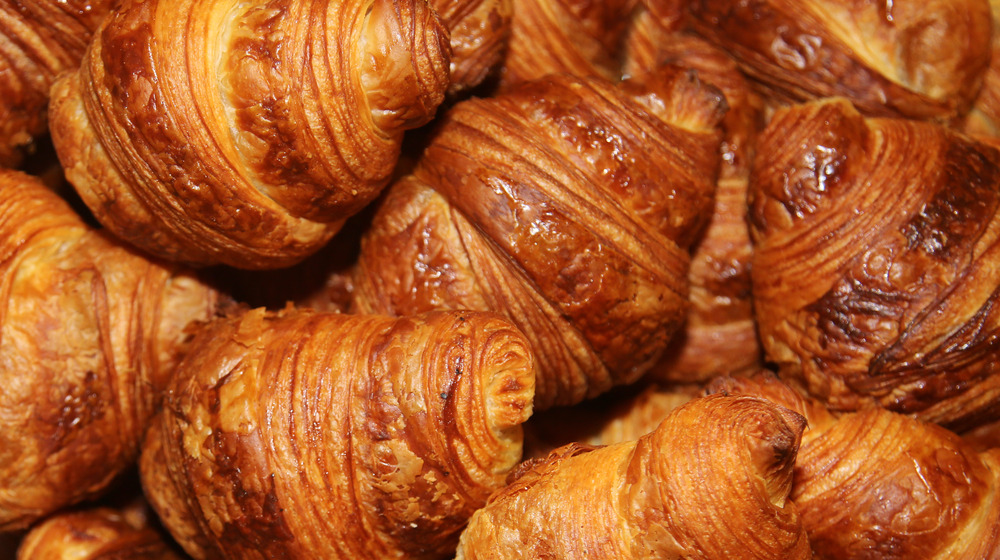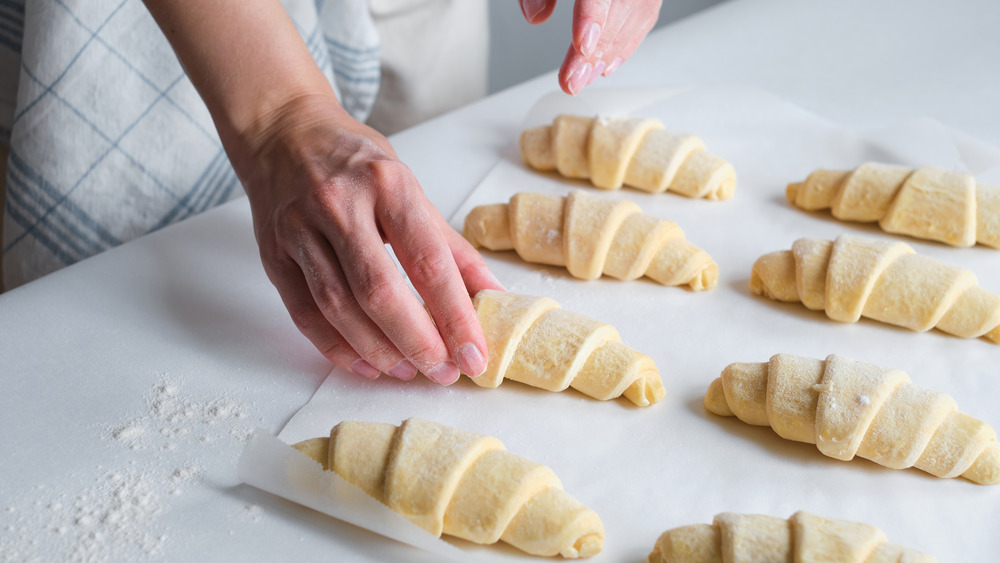The Rules Pastry Chefs Want You To Follow When Making Croissants
When it comes to baking, there aren't many pastries as intimidating as croissants. Something about the delicate layers can scare off even the most dedicated home baker. Luckily, there are many experts willing to share their secrets and provide a few rules that will ensure your success, should you wish to venture into the world of homemade croissants.
It all starts with the butter. You want to find butter with as high a fat content as possible, preferably about 85 to 87 percent, La Cuisine Paris explains in its blog. Lower quality butter with a lower fat content can contain extra water or additives, both of which might derail your croissants. In fact, since croissants contain so few ingredients, it's essential to find as high-quality options as possible. While all-purpose flour can be used, the site says it will create a more chewy, sturdy texture in your pastry. For a delicate texture, pastry flour is the way to go.
Next, it's all about technique. Pastry chef Dominique Ansel (the genius behind the cronut) suggested on MasterClass that the technique you use to roll out your dough is key if you want to create display-worthy croissants. While you do need to roll out the dough, your pressure needs to be gentle enough that you're not tearing the delicate layers you worked so hard to achieve (via MasterClass).
The key to great croissants is keeping things cool
When it comes to making croissants, temperature is a massive factor in just about every step. First of all, beware a kitchen that's steaming hot, as it can cause butter to leak out of your croissant dough before you even manage to get them into the oven (via La Cuisine Paris).
As for your dough, you have to keep it in a specific range — not too hot, and not too cold either. As Dominique Ansel revealed to MasterClass, chilling your dough too much could potentially damage the layers within your croissants, and as the butter gets brittle, it can make the dough more difficult to roll.
However, if things get too hot, that butter can melt out during baking. Additionally, high heat can cause some of the water within the butter to get absorbed by your croissant dough, and you'll end up with a product that more closely resembles bread than the delicate pastry of your dreams (via Food & Wine).
The process of incorporating layers of butter into your pastry, known as laminating, is one of the trickiest for many to learn. As Pardon Your French suggests, you want to be relatively fast during the process of rolling it out, so that the dough and the butter don't get too warm as you handle them. However, patience is key in between each rolling-out process, and you want to ensure your dough has plenty of time to chill. By meticulously following these steps, you'll have a tasty batch of buttery soft croissants in no time.

